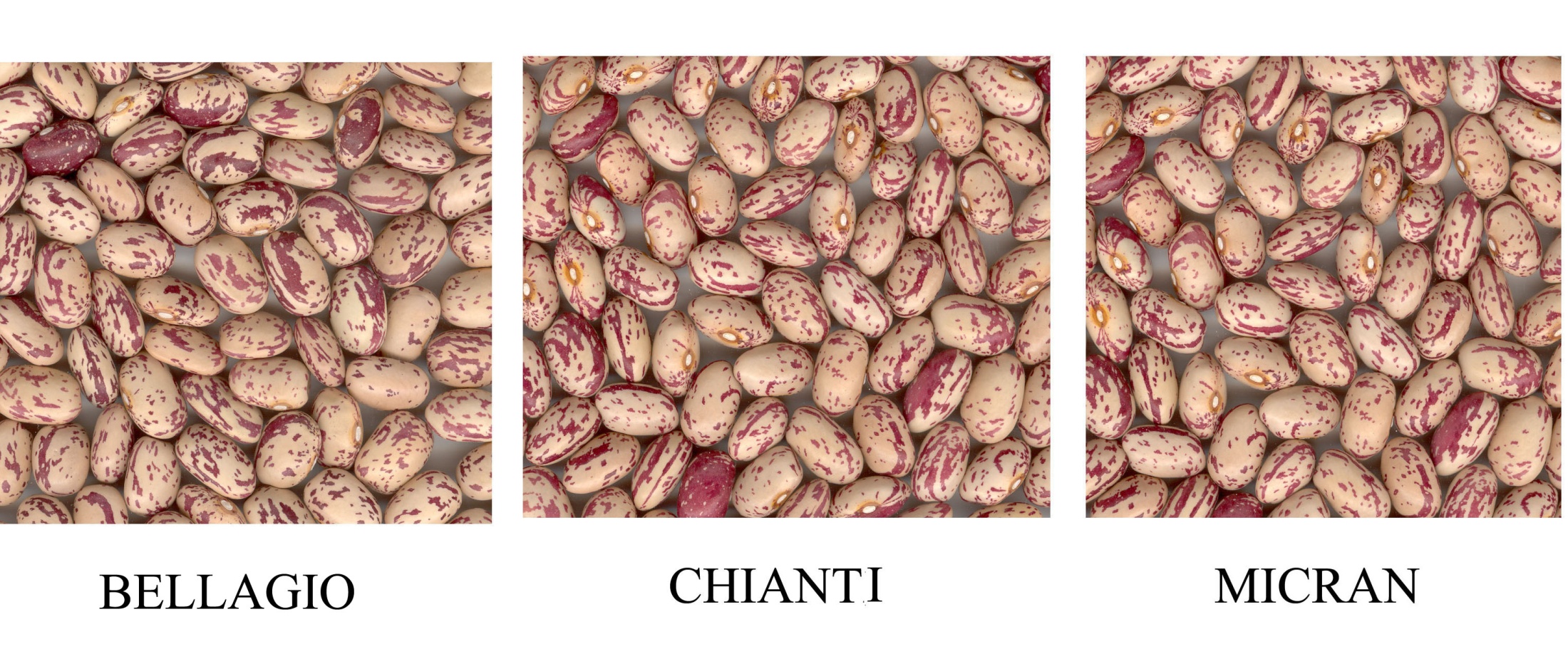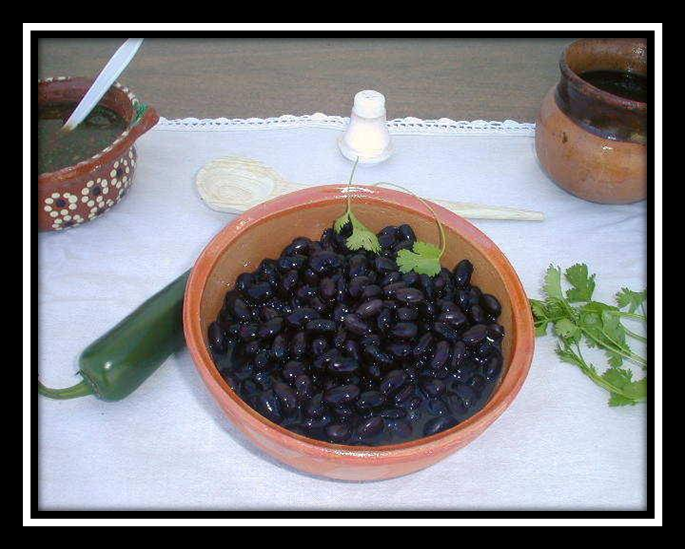Bean Variety Facts
 |
A natural gene mutation at the T locus produced a stable breeding partially colored Soldier Bean (right). The mutant possessed all the same performance, agronomic and quality characteristics of parental Red Hawk Dark Red Kidney variety (left). The new Soldier bean was named Redcoat. | |
| Additional information on the Redcoat variety can be found at: Kelly, J.D., G.L. Hosfield, E.G. Ernest, M. Uebersax, G.V. Varner, and J. Taylor. 2005. ëRedcoatí Soldier Bean. HortScience 40:263-264. Ernest, E.G., M.J. Bassett, and J.D. Kelly. 2005. A spontaneous mutation at a seedcoat pattern locus in the dark red kidney bean ëRed Hawk,í which changes seed from self-colored to the partially colored virgarcus pattern. HortScience 40:57-59. Matterhorn Great Northern Bean variety developed at MSU is grown in Southern Idaho by members of the LDS Church. The variety performs well in the field and is preferred as it stores well and is available for food and disaster relief when needed. Most bean varieties darken and harden in storage making them unsuitable as food aid due to increased cooking time needed to soften the beans. Additional information can be found at: Kelly, J.D., G.L. Hosfield, G.V. Varner, M.A. Uebersax and J. Taylor. 1999. Registration of ëMatterhorní great northern bean. Crop Science 39:589-599. The latest release from MSU is a vine cranberry bean variety Bellagio that possesses resistance to mosaic virus and anthracnose. Bellagio has excellent canning quality, so US production is destined for markets in Italy where it substitutes for the Borlotti bean widely used in Italian cuisine.   Not all beans are consumed as baked or refried beans in soups or as chili beans. Otebo beans grown in Michigan are marketed in Japan where they are processed into a sweet confectionary paste. The Fuji otebo bean is similar to Michigan navy bean but has unique characteristics that make it suitable for processing into white bean paste known as An paste. For this reason Fuij variety, developed at MSU, was named after the famous snow capped mountain in Japan. More information on Fuji Otebo bean can be found at: Kelly, J.D., G.V.Varner, B. Roman, and B. Long. 2009. Registration of ëFujií Otebo bean. J. Plant Registrations 3:223-225. Chipotle Mexican Grills directly contracts with bean producers in the central basin of Washington State to grow the Condor black bean variety for their restaurant chain. Condor was developed at Michigan State University for its superior processing quality and that characteristic is recognized and sought by Chipotle restaurants.  More information on Condor can be found at: Kelly, J.D., G.L. Hosfield, G.V. Varner, M.A. Uebersax, and J. Taylor. 2005. Registration of ëCondorí black bean. Crop Science 45:795-796. |
||
| Dry beans are recognized as a high source of Folic Acid, an important nutrient particularly for pregnant women. Folic acid levels are usually measured in raw (uncooked) bean seed without considering losses that occur during cooking and processing. A recent study, conducted by Dr. Karen Cichy USDA-ARS Bean Quality Geneticist at Michigan State University, reported an average folic acid content of 0.16 mg in 100 g processed beans. Seventeen dry bean varieties from four commercial classes were tested and ranged from 0.06 to 0.40 mg folic acid in 100 g processed beans. Black beans were higher in folic acid and Zorro black bean variety had the highest folic acid levels at 0.4 mg followed by Black Turtle Soup and T-39 black bean at 0.26 and 0.25 mg/100g, respectively. In sensory evaluation trials of cooked beans conducted by Dr. Cichy, Zorro black bean was the top ranked variety in both the sensory tests and canning evaluations. Demographic questions that were given as part of the sensory tests revealed a strong preference for black beans as the favorite market class. More information on Zorro can be found at: Kelly, J.D., G.V. Varner, P. OíBoyle, and B. Long. 2009. Registration of ëZorroí black bean. Journal of Plant Registrations 3:226-230. |
||



 Print
Print Email
Email